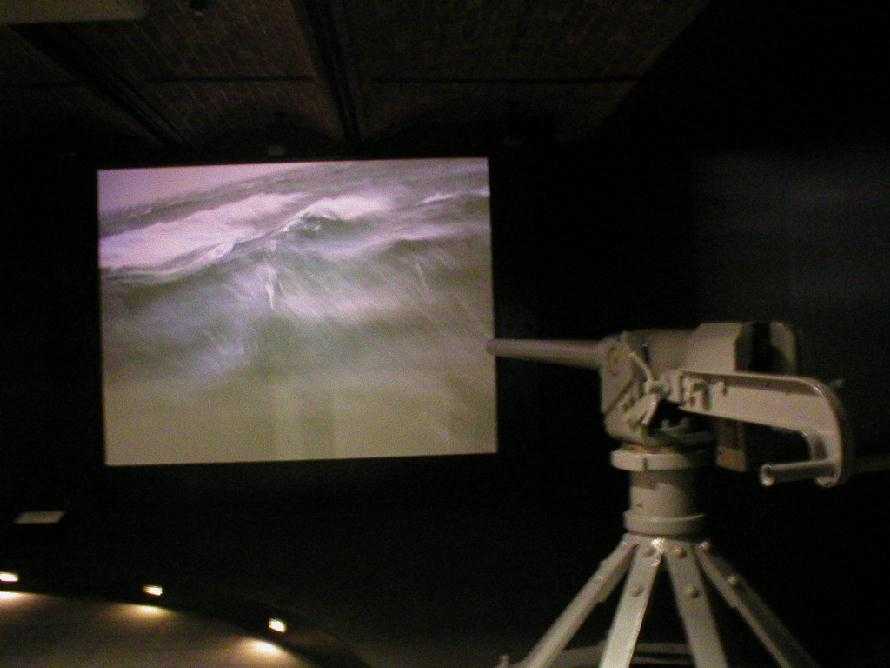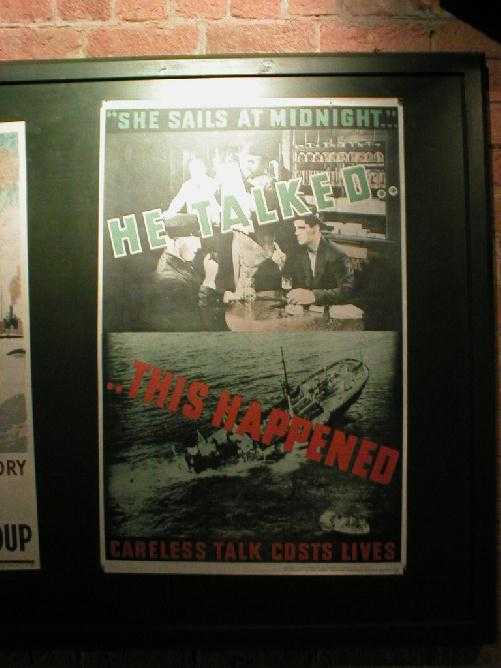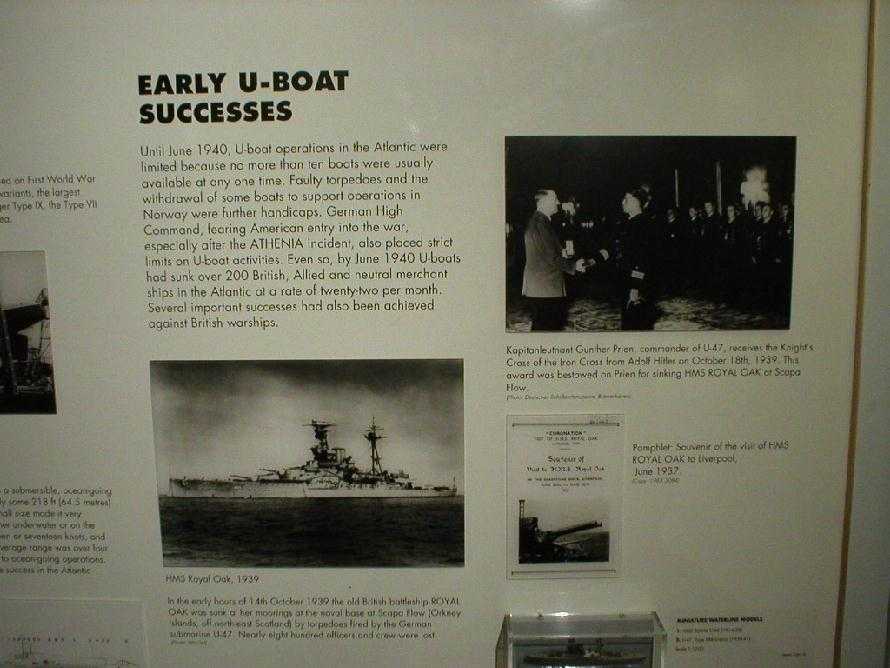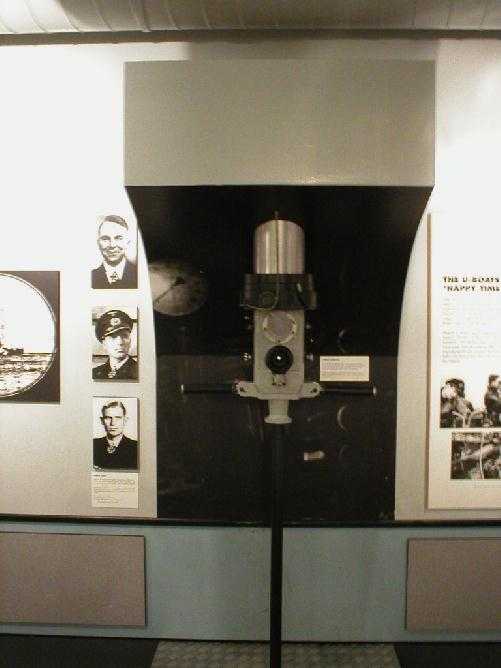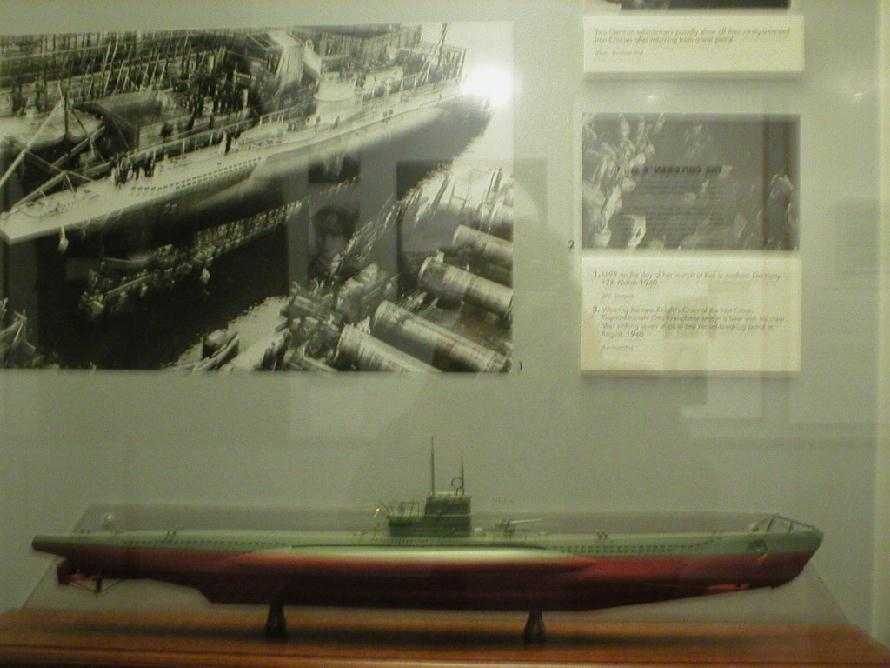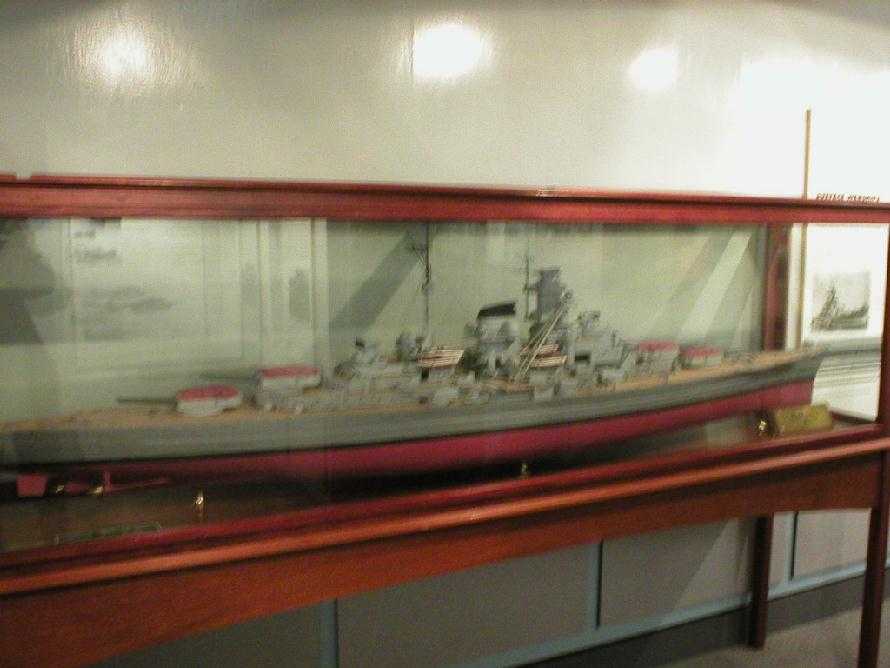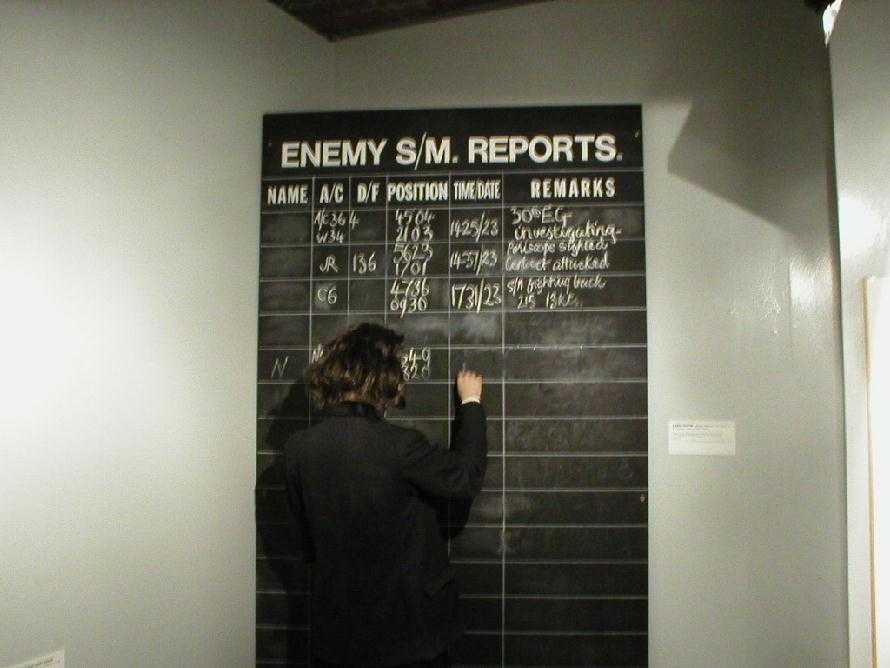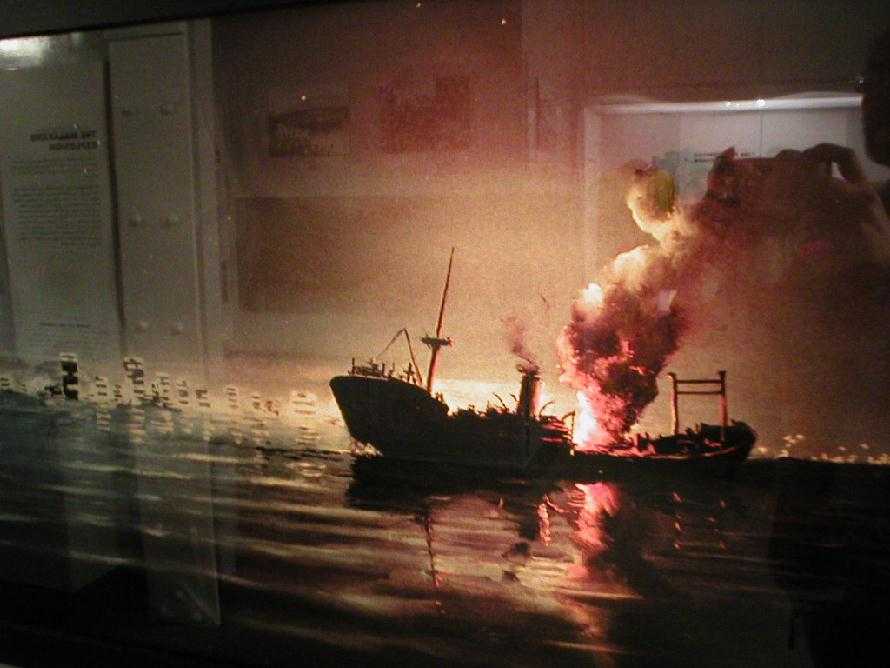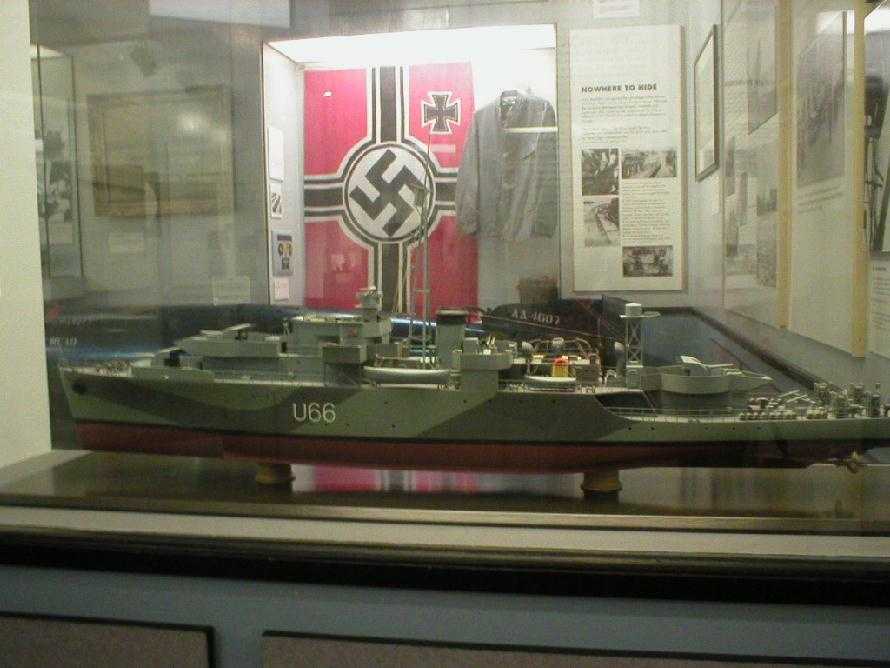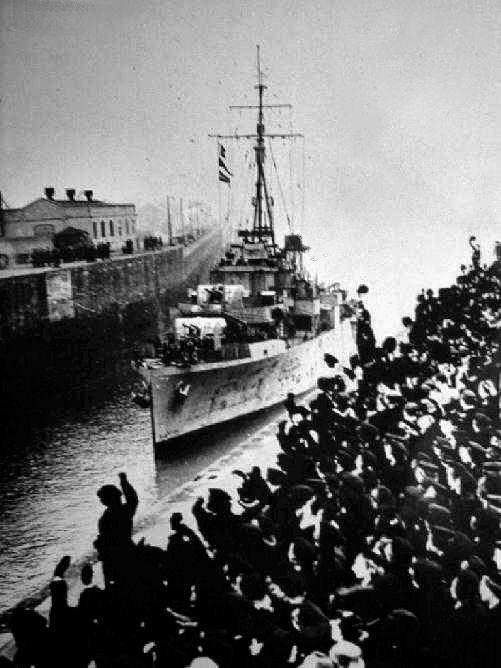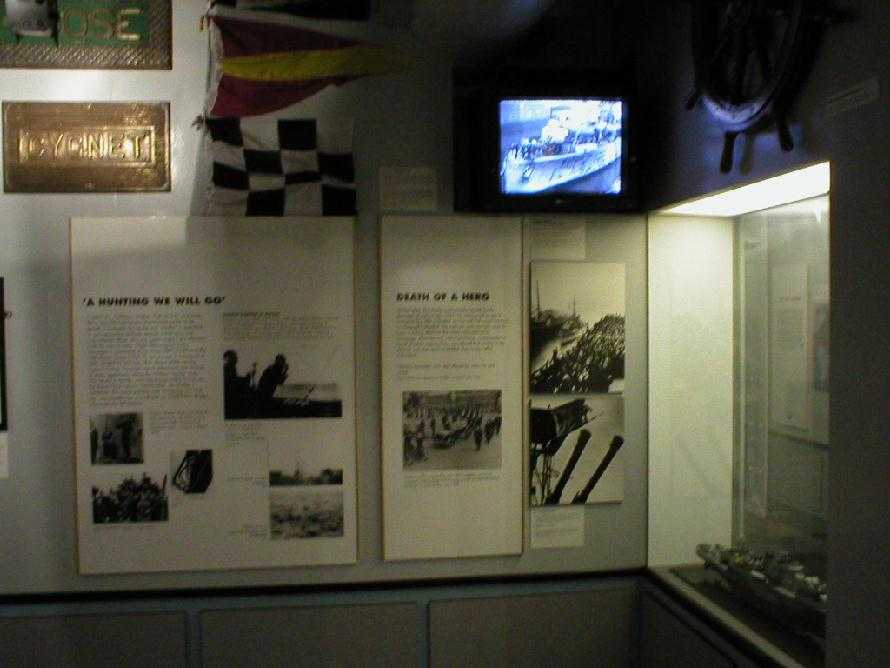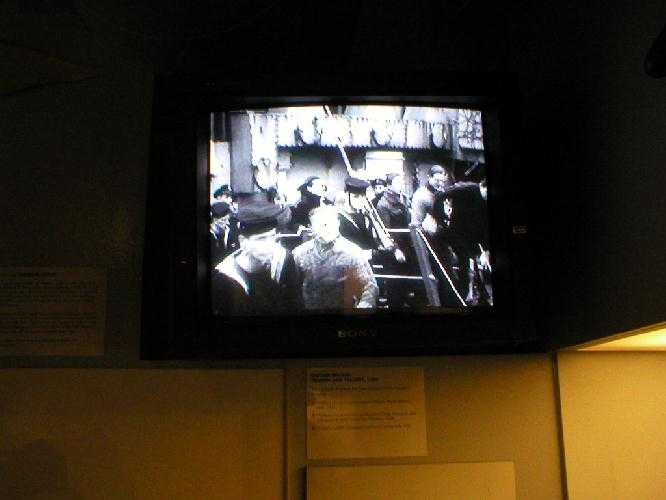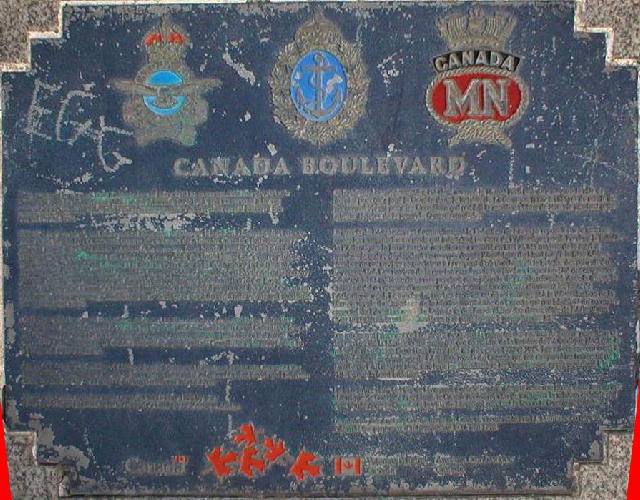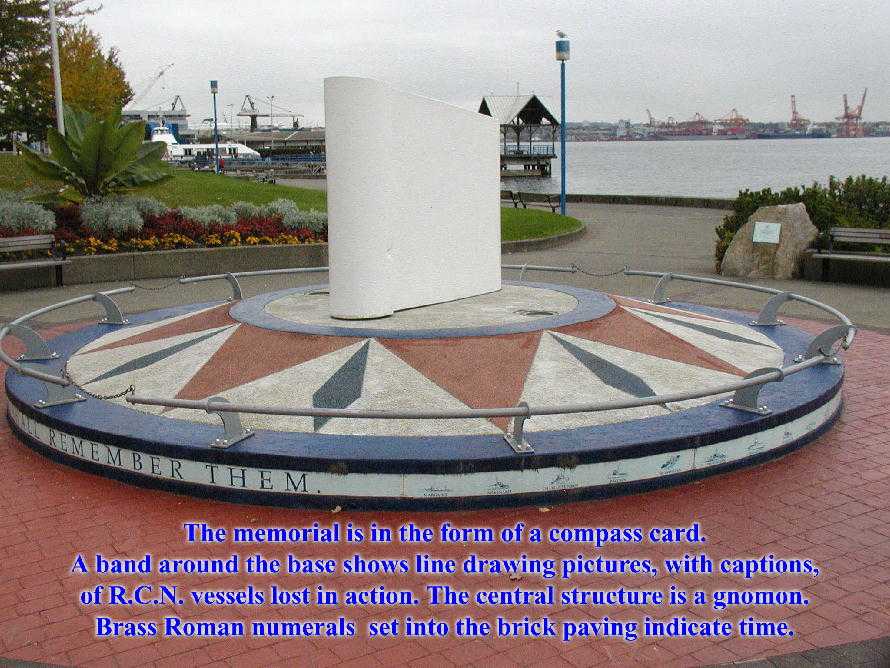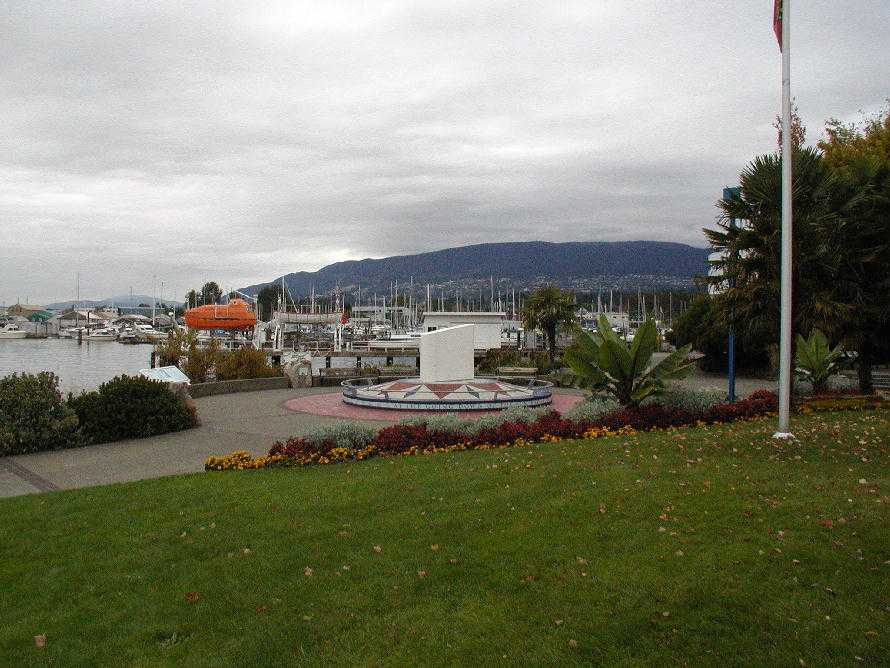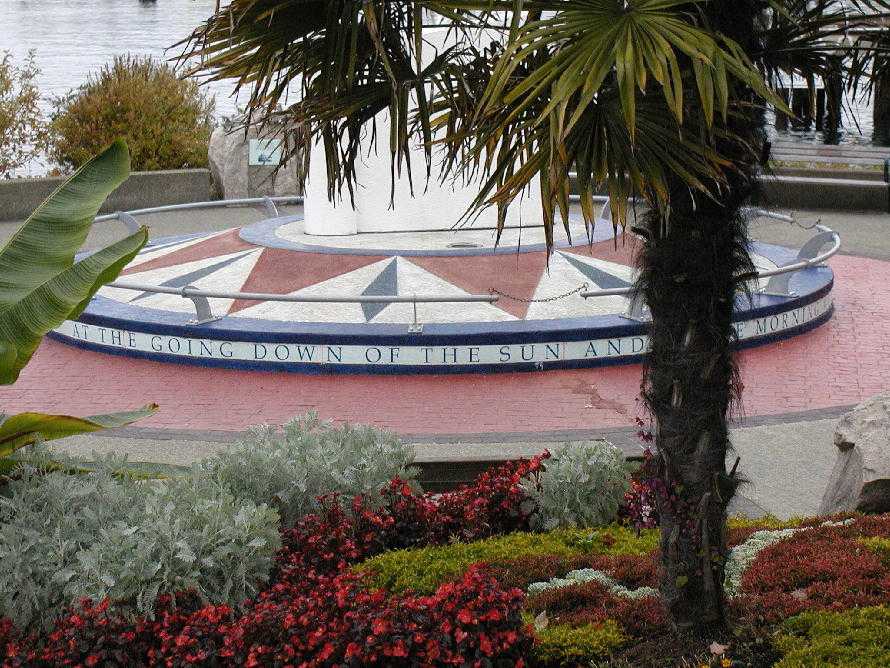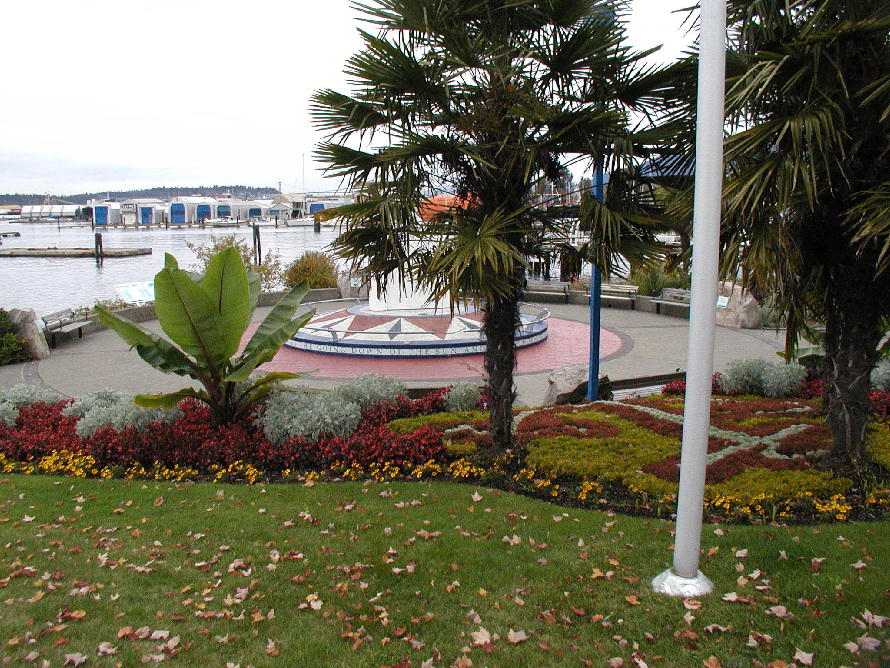|
During the opening few months of the war, the number of ships available to the UK increased with neutral or occupied shipping heading for British waters. Sweden and Norway (Greece later on) were the main contributors along with French and Belgian. At the outbreak, Britain had many ships mothballed
or awaiting scrap due to the depression of the 30s. They were quickly recovered!
Casualties
The numbers of casualties of both sides were greater than the combined deaths in all the naval battles over the previous 500 years! With so many nationalities involved in several theatres of war, it is hard to give
accurate figures. But it is certain that over 50,000 allied and neutral merchant seamen and gunners lost their lives, approximately two thirds of these being the victims of the U boat. 5150 allied merchant ships were lost during the war, and 2828 of these were sunk by submarine, mostly by U boats. The total sunk by U boat was less than 1% of the ships
that sailed the Atlantic. 148 warships were lost to U boats. This included 2 battleships and 3 carriers.
Merchant Seamen
United Kingdom
Neutral
Indian Lascars (UK)
USA
Norway
Greece
Chinese (UK)
Holland
Denmark
Canada
Belgium
South Africa
Australia
New Zealand |
22490
**6500
6093
5662
4795
**2000
2023
1914
1886
1437
893
182
109
72 |
Gunners on Merchant Ships
UK
of which RN
of which RAMR
USA |
3935
2713
*1222
***1640 |
*Royal Artillery Maritime Regiment
** Approximate figures
*** Figures to end of 1944 only
U Boat
|
U Boats commissioned
U Boats Sank
Sailed on operational patrols
Of which were sunk
Sailors who went to sea
Of who died
Captured |
1170
785
863
754
39000
27491
5000 |
Headquarters Western Approaches
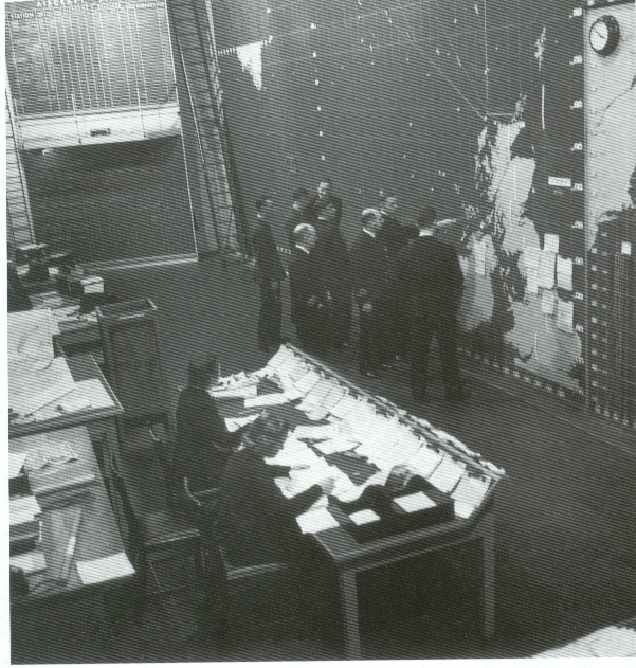
Western Approaches originally had its HQ in Plymouth, but when London was virtually closed as a major port in 1940 a new HQ was chosen and prepared in Liverpool and the move was made early in 1941. The Royal Navy set up was in Derby House and the Merchant Navy part
was in the nearby Royal Liver Building. There were other shore establishments as far afield as Greenock and Milford Haven and in Northern Ireland. It is said that Western Approaches eventually became responsible for more personnel than had been administered by the entire Admiralty before the war. The Royal Naval HQ can be seen today in its “original
1942” layout, underneath Derby House, entrance in Rumford Place, off Chapel Street, under the sign which declares “Top Secret Wartime Bunker!” Fear not, it is not commercialised. Unfortunately, it is not open all the year round. March – October is the norm.
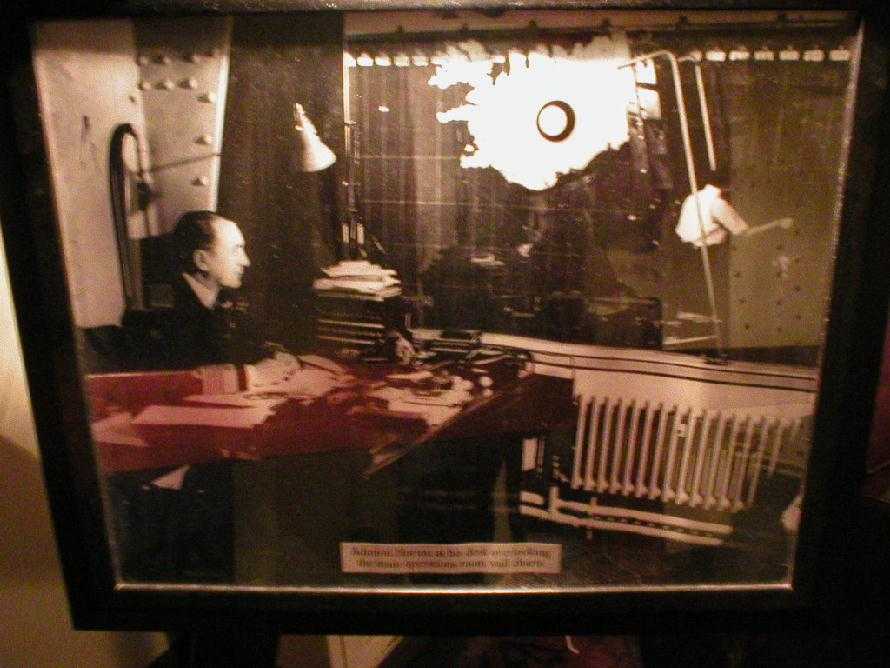
Admiral Sir Max Horton
Shore establishments had the job of maintaining the ships whereas HQ Western Approaches was “to ensure the safe and timely arrival” of the convoys. Admiral Sir Percy Noble
commanded Western Approaches from early 1941 to November 1942 and built much of the basis for later success. He also built it up during its difficult, formative, months. Sir Max Horton replaced him. Although Noble was as good a Commander as Horton, most experts agree that Western Approaches really began to “hum” when Horton took over. It was
Horton who despatched
Captain Johnnie Walker, with his Black Swan Class Sloops, to hunt and destroy U boats wherever they may be found. This was a far cry from the previous tactics of escorts waiting with convoys to be attacked. The idea of a Hunter Killer group was almost certainly Walker’s who studied the “unfashionable” anti submarine warfare before
the war. It was widely believed at the time that Captain Walker could “smell” a U boat for miles, but nowadays, with the knowledge that we have of Bletchley Park and Enigma, this probably was not quite accurate! Nevertheless, once Walker found a U boat, it did not get away! Walker’s ships were based in Gladstone Dock, Liverpool.
Admiral Horton had been a successful WW1 submarine commander (just like his opposite number Admiral Doenitz) and his sinking of the German cruiser Hela on 13 September 1914 was actually the first
ever sinking of an enemy ship by a British submarine. Before Western Approaches Horton had been Flag Officer Submarines, and his deep knowledge of submarines undoubtedly helped him to counter U Boats. Of Jewish extraction, Horton was described as “absolutely ruthless and so astute he could see through a brick wall” by a member of his staff.
Horton spent all morning, every morning at Derby House. He lived there. But on afternoons he could usually be found playing golf at Hoylake, across the Mersey, on the Wirral. He would then dine, play some
bridge and reappear in the Operations Room each evening. In the event of a convoy battle developing or taking place, Horton would usually stay up all night, in pyjamas and dressing gown supervising the events. However, where Sir Percy Noble had known all the Wrens by their first names, Max Horton would only address the senior officer present and if he
did address the girls it would be “WREN!” He did not treat them nicely. However, the hours and work that these girls, and girls from the WRAF, put in was astounding and is mentioned here with pride and gratitude. One girl, Elizabeth Lane, gave her life in a fall. Horton died in 1951.
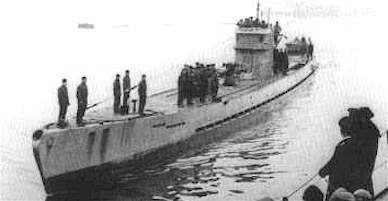
U Boats
A U boat is the term popularly used when referring to the German Unterseeboot. German U boats in 1916 and 1917 had virtually starved Britain, nearly cutting the supply to British ports. The situation was saved only
by the Admiralty introducing the convoy system, albeit reluctantly. The losses fell dramatically. The lesson had been well learnt and when Britain found herself at war in 1939, the convoy was reintroduced at once. U boats had put to sea before war was declared and many British ships were on the high seas alone. The convoy system had one major drawback
though, it effectively cut a cargo ship’s load bearing capacity by one third over the period convoy’s were in use, multiplied by the number of ships used. This was, in its own way, a minor victory for the Germans. The loss was accounted for in the time it took convoys to assemble, and of course, a convoy could only travel as fast as its slowest ship. A U
boat was not a submerged fighting machine but ideally, a ship that could submerge. Most U boats fought, where practical, surfaced.
The propaganda machine of the Allies transformed the crews of the U Boats into Nazi monsters and
vicious murdering bullies. In Germany they were on a par with the Luftwaffe. Their courage and skill was rightly recognised as deserving public adulation and this they received. As WW2 progressed the adulation afforded to the Luftwaffe waned, but the U Boat crews remained popular to the bitter end. But were they really callous bullies? No, I think not.
The vast majority were the exact counterpart of their Allied enemy, sailors doing a job. But propaganda being an extremely useful tool in war, they were described thus to keep the fighting spirit going, the thirst for revenge and obviously the will to win. Many U boat commanders would surface alongside lifeboats, provision them and give them a course for
safety. One of these, Otto Kretschmer, survived the war as a POW in Canada. He was lucky he did not get shot for espionage, conducting a successful spy ring there! But it takes a very special kind of person who can go down deep beneath the waves in an iron “coffin” and I do not think I could do it.
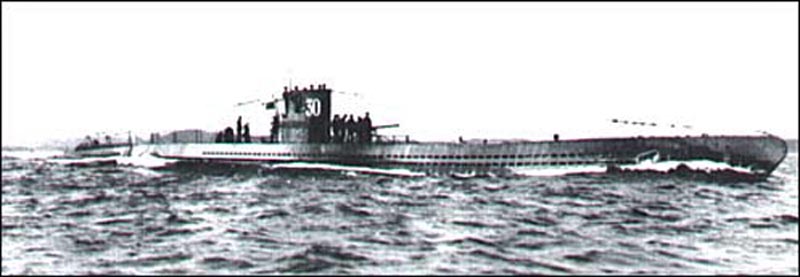
U-30 - Sank the
Athenia
U Boat Production
Thanks to an Anglo-German agreement, Germany began to build U Boats in 1934 and in 1935 a flotilla was formed at Kiel under the command of a certain Kapitan Karl Doenitz. By 1939, there
were 6 Flotillas operational. Early successes of these U Boats in WW2 included the sinking of the Royal Oak in Scapa Flow. Other “successes” were seized upon by Allied propaganda and events such as the sinking of the liner Athenia (Lemp U-30 above) serving to turn the public into hating these German sailors. So much so that when prisoners were later being put
ashore from one of Captain Walker’s hunter killer ships, HMS Wild Goose, members of the public attacked them on the streets of Liverpool. The escorting servicemen having to protect the Germans from the people. The Athenia had been loaded with civilians, mainly women and children and many Americans of which the British were quick to make full use of
the propaganda. The Athenia was sunk in direct contravention of International Law under the 1935 London Submarine Agreement in which all parties undertook to observe the Hague Convention. In 1939 Hitler ordered that these rules be observed. In the case of the Athenia, no warnings were given and 110 of her passengers and 18 members of her crew died.
Germany eventually officially dropped all pretext to the “rules” 3 months later. It should be noted, quite rightly, that several U boat commanders helped survivors, when it was safe to do so.
Werner Hess (U-530): “Admiral Doenitz never ordered us to shoot survivors. We had a clear order, which we always complied with as far as conditions allowed, to help survivors, but they must not be brought on board. We ourselves certainly met English survivors in the North Atlantic and gave them food and
cans of water. We even sent a signal giving their position. There was always the chance that our own boat would be sunk one day”.
The merchant cruiser
“Laurentic” was torpedoed one night in Nov 1940. The crew took to the boats and a voice called out in the dark asking if they had enough food. Fearing a trap, they kept quiet and a voice shouted “Goodnight British” and the U boat sailed away. It was the legendary Otto Kretschmer. It is very difficult to prove, or disprove stories of survivors
being machine gunned in the water, it is also difficult to judge if this was purely a propaganda ploy or actual events. If it ever did happen nobody survived to relate the facts to the authorities.
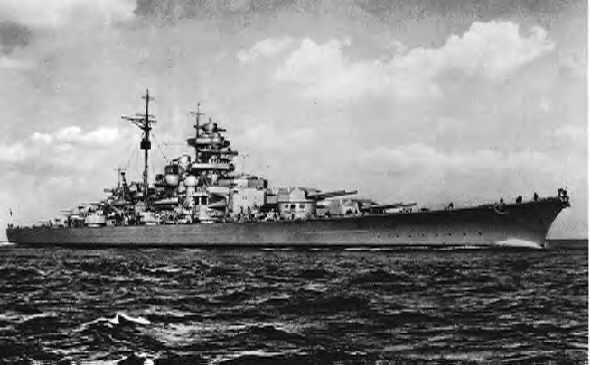
Bismarck
The Battle of The Atlantic Prelude
At the beginning of the war, and into the first 2 years, the U boat was not the only danger to British ships. Mines, surface ships, aircraft and armed raiders all had to be overcome. The
Graf Zeppelin, Germany’s only aircraft carrier, never saw service and the Royal Navy soon took care of the surface raiders. Britain’s island status meant that all her oil, most of her raw materials and a lot of her food had to be imported. The U boat waged a war of attrition.
For every ship it sank, it was a ship that would never again carry a cargo. The U boat commander denied the Allies the use of that ship to carry essential war supplies on later voyages. Crew losses were quickly overcome but replacing the ship took time. In the period pre Dec 1941, if the U boat had succeeded, Britain, no matter how valiant her people
were, would not have survived. By the end of 1940 the Germans had sunk 1281 ships, mostly British, totalling 4,747,033 tons. This was about one fifth of her 1939 merchant fleet. It is now freely admitted that the threat of the submarine had been severely underestimated between the wars. This is usually referred to as the “Jutland Syndrome” amongst naval
personnel. Captain Walker being one of only a few officers who attended this “unfashionable” side of naval training, as did Staff Officer (Anti Submarines) HQ Western Approaches. No specific anti submarine vessels were available to the Royal Navy, the specialist convoy escort enjoying an extremely low priority! Indeed such things as aircraft carrying escort carriers did not even exist, although later were to prove
highly advantageous in the battle against the U boat.
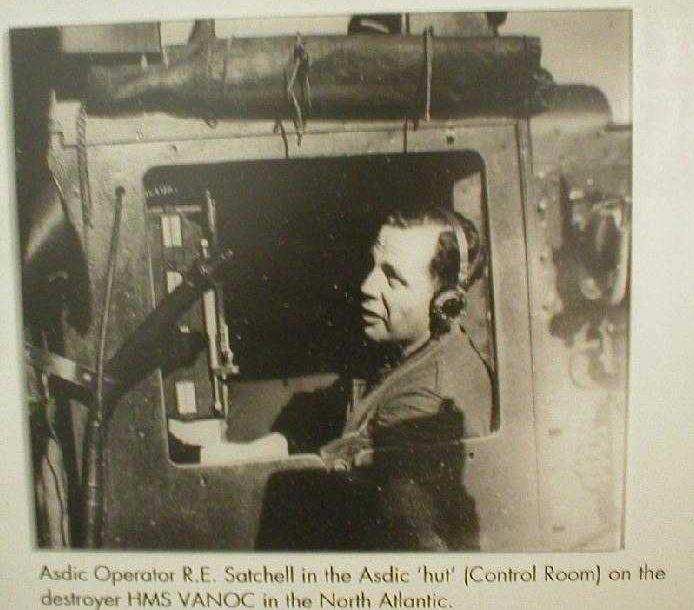
ASDIC Operator (HMS Vanoc) RE Satchell
Anti Submarine Warfare
The Royal Navy’s main anti submarine weapon was the 1917 vintage depth charge and a very secret ASDIC (sound detection equipment) now known as sonar. A depth charge was a 250lb drum of explosive preset to an
estimated depth to explode. WW2 U boats could dive deeper than the Royal Navy anticipated, certainly a lot deeper that their British or American counterparts. To sink a U boat a depth charge had to detonate within 20 feet of the submerged hull. Not an easy task when the submarine can move in 3 dimensions. One tactic used by Walker was to sit on top of it
and wait for its air to run out. As he roamed independent of convoys he could afford this relative “luxury” and use it to great effect. One such attack, he even predicted exactly when it would surface, and it did! Exercises in anti submarine warfare had been restricted to one or two destroyers attacking a single submarine. The introduction of the wolf
pack in 1940 came as a complete shock to the Navy. ASDIC was a submarine detection device housed in a dome beneath the ship. It sent out a narrow beam of sound in a series of pulses, which would reflect back from a submerged object within a max range of 3000 yards. The echo produced an accurate range and bearing to the target. Differences in the
temperatures at differing levels beneath the sea confused the ASDIC somewhat and if the ship was travelling too fast.
Commander C D Howard-Johnson Staff
Officer Anti Submarines, Western Approaches HQ wrote:
“I was serving in gunboats in China in 1930 when I decided to specialise in anti submarine warfare because I reckoned that we had nearly been brought to our knees in WW1 by the sub and this would be an interesting line for the future. To qualify in A/S was looked upon rather poorly in those days
and many friends raised eyebrows that such a keen and bright officer should head for such a “backwater” full of lazy, hard drinkers! I was Staff A/S Officer of the 6th Destroyer Flotilla at the time of the Spanish Civil War and I found that amongst the four ASDIC operators in each of the 9 destroyers half only managed to get 4 hours operating
their ASDIC sets in the year!”
Captain
Walker had attended the very same, kindred spirits, so to speak, one in
HQ Western Approaches, the other at
sea; both commanded by an ex submariner!
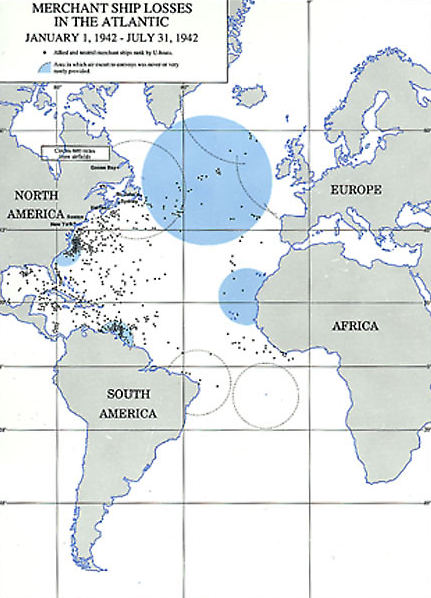
The Gap
Up to 1941 there had been a significant gap in the centre of the Atlantic where no aircraft could reach and escorts had to return to base for refuelling in most cases. Then Britain
occupied Iceland and the gap shrank a little. Later the Americans were to join the British in Iceland. The Canadian Navy stretched its cover eastwards and the Royal Navy westwards, until, in May 1941, the two Navies met. In July 1941 the first westbound convoy joined the first eastbound convoy receiving full protection right across the Atlantic. The U
boat “happy time” was coming to an end. The only blight on this was that the “air gap” had yet to be closed. Infighting between the Coastal Command and Bomber Command meant that planes with the ranges to cover this gap were kept for bombing raids over Germany. We had to await the arrival of the American long range Liberator before we could close the gap.
In September of the same year, the US Navy took responsibility to escort convoys in the Western Atlantic that contained US shipping. Two destroyers were sunk by U boat as an inevitable consequence, the Kearney and the Reuben James. It should be noted that these were actually nearer the UK than the United States at the time. The arrival of
radar on board the escorts added another factor in the favour of the Allies along with the introduction of star shell and snowflake flares to illuminate U boats.
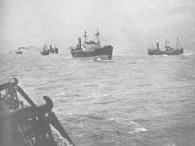
Wolf Pack Tactics
For the wolf pack tactics of the U boats to work effectively, they had to use radio. When a surfaced U boat transmitted a convoy or weather report it revealed its own location, it was
detected by HF/DF on board escorting warships, as well as shore-based stations. HF/DF is High Frequency Direction Finding or Huff Duff as the sailors called it. The result was that the position of a transmitting U boat could be fixed and an attack usually ensued. Somehow, German knowledge of HF/DF had been transmitted to U boat bases, but was contained
within a routine report, which did not cause any concerns and was overlooked, no action being taken. Captain Walker and his Hunter Killers used HF/DF to great effect. Many U Boats were lost directly due to HF/DF. A few U boat commanders refused to answer High Command until the third day, if they didn’t they would be reported missing. Some naval officers believe that their greatest mistake in the
Battle of The Atlantic was Admiralty’s reluctance to divert shipping from other theatres to take care of the U boat once and for all, in 1940 – 1941, when there were not so many of them. In the first 12 months of the war, only 37 U boats were actually built. It was 1941 before building progressed, but a valuable chance had been lost. In April 230 boats
had been built but of these, only 32 became “online” for operations. 1941 ended in somewhat of a stalemate, the U boat had sunk 432 ships and in turn 32 U boats had been sunk, 27 of these by Royal Naval escort vessels.
If the U boat offensive in the Atlantic had succeeded in the period 1942–1944, the invasion of Europe would never have taken place, as the Allies would not have been able to transport so many thousands of troops to Britain in preparation for June 1944. Either way, if the U boat had succeeded, history would
have been dramatically rewritten and I would not be writing this. It was a very close run thing. It was to be a fight to the finish, no quarter asked, or given. An actual surrender of a U boat was an extremely rare occurrence. Bearing in mind that a U boat always dived when discovered, survival chances were necessarily greatly reduced. Records of
the vast majority of U boat losses all relate with “no survivors”.

US Tanker burning during "happy time"
December 1941 into 1942
The sneak attack upon Pearl Harbour by the Japanese in December 1941 surprised even the Germans but a few days later they declared war on the United States and Doenitz sent some
long-range U boats to America’s east coast in January 1942. The US coast was not blacked out and the U boats enjoyed a “happy time” where their targets were silhouetted against the brightly lit coastline. One U boat recorded that he sat, on the surface, and watched the funfair on Coney Island, listening to the noise. Eyewitnesses on the beaches of
America clearly remember watching U boats sailing past them, or watching as a passing tanker would suddenly erupt into flame scarcely yards from the shores. People out walking their dogs recalled seeing U boats shooting at passing steamers.
With the help of “milch cows” or U boat tenders, Doenitz was able to maintain a force averaging 8 U boats at a time, operating some 3500 miles from German held ports. The American reaction appears to be nothing short of criminal. Despite the persistent flow of information from Bletchley Park and the Admiralty
they appeared to want to do nothing, nor learn from British lessons. Convoys were not adopted and it was not until April, 3 months later, that a coastal blackout was ordered. During this time not a single German submarine was sunk. Britain was not at all pleased; many of the ships being sunk were British that had been escorted through U boats packs and
heavy seas almost to the very entrances to harbours only to see them torpedoed whilst sailing in unprotected American coastal waters.
Up to May 1942 the
Germans sank 362 ships in the American waters. In fairness it must be mentioned that at the same time, American troops were being hard pressed in the Pacific by the advancing Japanese. But the Commander in Chief of The Eastern Seaboard, Admiral King, has to take and shoulder the vast majority of the blame for simply failing to do anything for so long.
Eventually the Americans, using some ships borrowed from Britain, called all ships together into convoy’s, gathered together their anti submarine ships, including the British ones, and at long last set up a convoy system. Immediately the sinking of ships tailed off and U boats began to be sunk. Doenitz pulled his U boats out. By October 1942 Doenitz had
192 operational U boats compared with 100 at the beginning of the year.
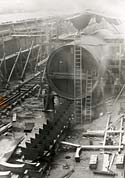
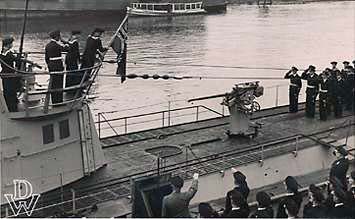
German Pride
By the end of 1942 the German shipyards were producing 5 new U boats per week. The average cost of a Type 7C U boat was 3 million Reichmarks (£300,000) and the
larger Type 9c, 4 million Reichmarks. There were often discussions amongst U boat crews as to which yard built the better boat! Hamburg’s shipyards came out as the most soundly built but even here opinion was divided as to whether Blohm & Voss or Deutsche Werft were the best of these. Apparently Blohm & Voss gave some finishing touches missing in other
boats! The same pride displayed by the crews of the U boats was displayed by the yards that built the boats.
Leutnant von Egan-Krieger of the U-615 recalled:
“One day while we were at Kiel two men suddenly appeared from Blohm & Voss and insisted on stripping down the exhaust. One of the workers admitted that he may have accidentally left a
screwdriver in it whilst the boat was being built and his conscience had troubled him ever since in case the rattling of the loose screwdriver might one day endanger the boat whilst we were making a quiet underwater escape from a British escort. They found the screwdriver, reassembled the exhaust and returned to Hamburg. We were full of admiration for
the man who had admitted his mistake and for Blohm & Voss for following it up so thoroughly.”
On the 18th
May this happened, when the escort ship HMS Anemone attacked the U-615, the Anemone was an escort with convoy HX229. Not long after U-615 had been forced to dive, she was depth charged by Anemone, dropping about 10 depth charges set to 150 feet and 385 feet. U-615 was part of an attacking wolfpack and escaped unharmed.
(The eventual fate of the U-615 was that it was sunk on 7 Aug, 1943 in the Caribbean Sea, in position 12.38N, 64.15W, by depth charges from US 6 Mariner and 1 Ventura aircraft. 4 dead and 43 survivors.)
In the last 6 months of 1942 U boats accounted for another 575 ships, totalling 3 million tons. The total for 1942 was a staggering 1160 ships for a tonnage of over 6 million. Another 1.6 million tons had been sunk elsewhere making the
total for the year more than 1939, 1940 and 1941 combined. It was not one sided however. The U boats losses were 66 in the last 6 months of the year. One very significant factor can be realised when these figures are analysed. For the first time U boats sunk by aircraft exceeded the numbers sunk by ships. A handful of very long range Liberators were
operating now out of Iceland and Northern Ireland, the air gap, although still there, was narrowing
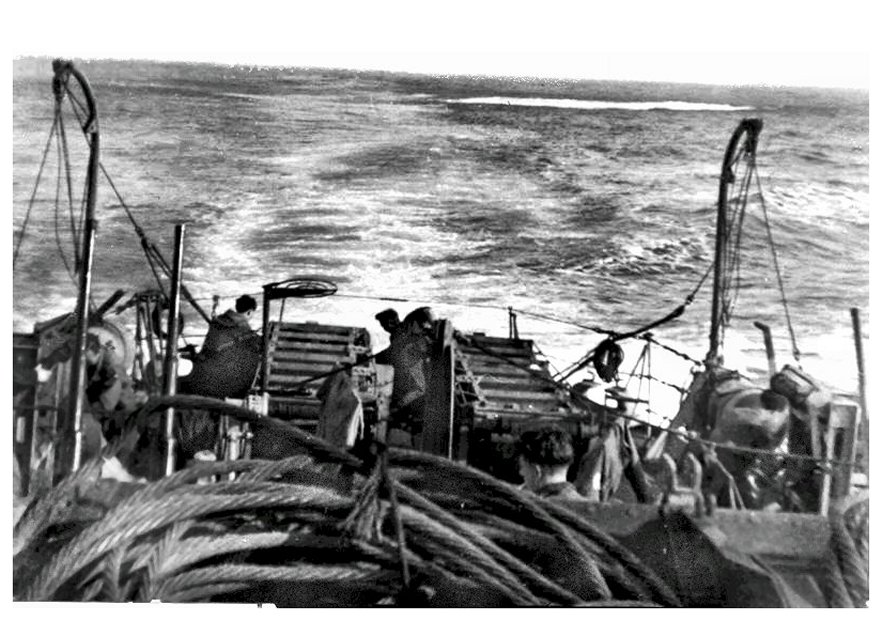
The Turning Tide - 1943
By the time 1943 came along, Captain Walker and his hunter killers were beginning to achieve phenomenal success, with his new custom built Black Swan class
anti submarine sloops, in both the Atlantic and the Bay of Biscay and the early U Boats commanders and sailors had all either perished with their U Boats or been captured, mostly the former. The Aces, the real “experts” had all gone. Most U Boat commanders by 1943 had been only junior officers at the outbreak of the war. Most were only in their 20s,
were tremendously loyal both to Hitler and to Doenitz, felt it was a great honour to be in U Boats and wore the white covered cap with pride, affording themselves a status not given to many, more senior, officers. U Boat captains at this time were the “elite” of the German Navy. The average U Boat had a crew of about 50, 39 of which were ratings. The
concept of the “all volunteer” crew put about by Germany was not quite accurate. Officers did not “volunteer” and were expected to do whatever their superiors deemed necessary. An example of this was Kapitanleutnant Bahr, of the U-305, who had previously served aboard the Cruiser Prinz Eugen. The move from Cruiser to U-boat was to cost him his life in
Jan 1944 when U-305 was sunk with all hands.
Werner Hess of the U-530, volunteering for the U boats, had a different reason than most: “My father was a
well known Social Democrat and was having a difficult time under Hitler. Life on a U boat was hard but after I became a U boat man my father was left in peace.”
U Boat Manning
But as the Allies began turning the tables and U boat loses began to mount, and shipping losses began to fall, volunteers for the U boat Arm began to slacken off dramatically. An observer at
the time noted that very few U boat crewmen were married and that even fewer volunteers were married. Technical men were in short supply and men were “invited” to volunteer. For a German, there was no question but to comply. All in all, the vast majority were volunteers and served with absolute loyalty and devotion. But to say that all U Boats were
manned only by volunteers is a myth. It will have been approximately 80% in favour of the volunteer. A few of these sailors would also have been Nazi’s but most were just sailors fighting for their country. The scene’s in the
superbly made German film production “Das Boot” in which the “politically correct officer” is treated with some contempt and “wry humour”
are probably quite accurate. The knowing smirks behind his back etc. The Battle of The Atlantic was to continue to the final day of the war, and in one or two cases, beyond.
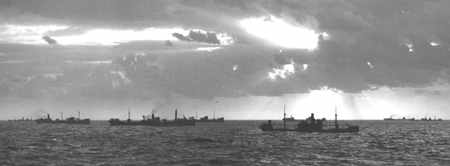
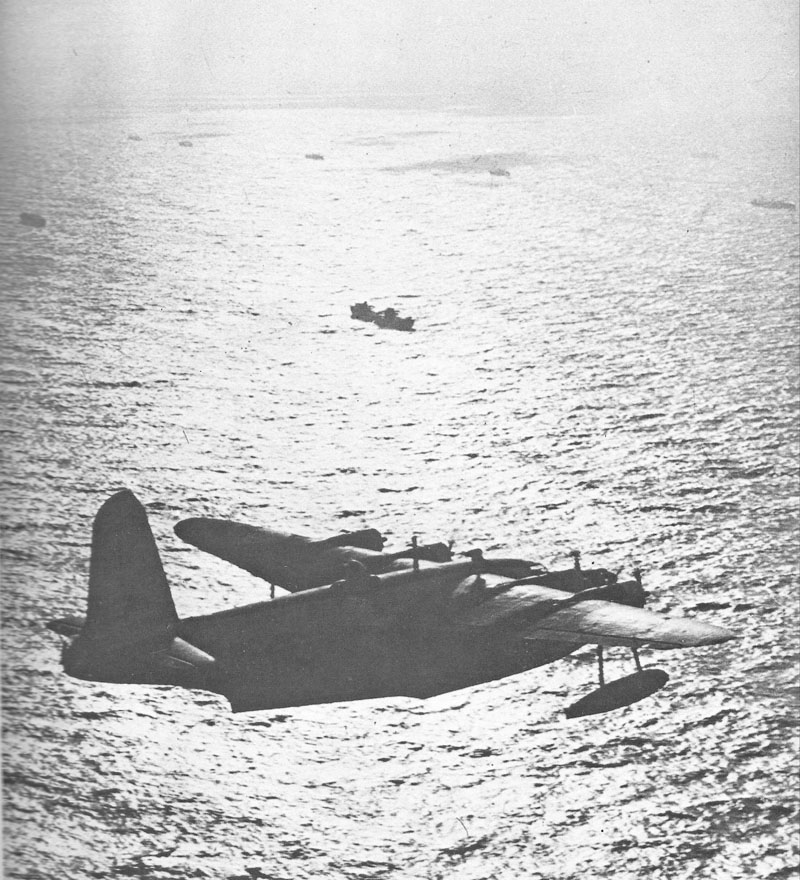
Sunderland Flying Boat over flying a convoy a formidable
foe with 10 machine guns
Rerouted Convoys
By May 1943 shipping losses were reducing rapidly and U boats
were finding targets harder to come by. As the war was coming to a close, Doenitz had the foresight to order that all German records were to be moved to Flensburg, near Denmark, and in the event, to be handed over to the British and Americans. As a result of the Western allies having access to those, it was determined that the Germans did not have a clue
why shipping was able to divert around their U boat packs. They wrongly assumed massive advances in radar technology as well as intelligence from both French Resistance and British Intelligence. They also assumed that HF/DF was now so good the British were able to “sense” their U boats in waiting. They refused to believe that it was their enigma naval
codes that had been broken and that the British were reading orders to the U boats as quickly as the U boat commanders themselves. Post war books occasionally hinted that German codes were being broken but as Churchill had insisted, members of the Intelligence fraternity had all signed a “black book” to swear that they would never talk about their part
in the war and for nearly 30 years historians had the impression that HF/DF and Naval Officer skills were responsible.
In a strange and bizarre coincidence,
in May 1943, a Halifax of 58 Squadron Royal Air Force, commanded by Wing Commander W. Oulton, sank the U463. The same aircraft sank 2 other U boats the same month, the U563 and the U 663! Each U boat exactly 100 “up” from the previous one.
The spring and summer of 1943 saw the swing in favour of the Allies in the Battle of The Atlantic. The combination of the support groups, the anti submarine ships, the closing of the air gap and the changes to Allied codes (which the Germans had known) all combined to defeat the U boat. In May 1943 Doenitz
lost 41 U boats. The Allies lost 50 ships. Doenitz removed his remaining U boats from the Atlantic for the time being. In July 1943 the turnover of new shipping finally overtook the turnover of tonnage sunk since 1939 and thereafter the issue was never in doubt. Mainly due to the prefabricated Liberty Ships being thrown off American slipways at the rate
of one every 4 or 5 days. During this time Doenitz lost one of his sons when U-954, on its first patrol, was lost – sunk by a Liberator from 120 Sqn.
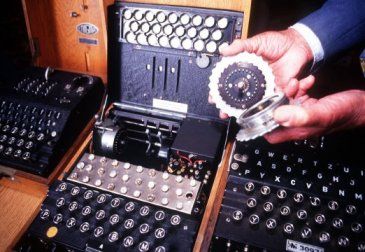
Enigma
In 1974 a publication called “The Ultra Secret” by FW Winterbotham partially lifted the veil of secrecy that surrounded Bletchley Park. Known on the U boats as Schlussel-M, (Key Machine) the Enigma machine had been in our hands since before WW2 broke out. It was to be quite a while before names such as Alan Turing, Colossus, bombe, and the work really carried out at Bletchley Park, Station X, was to become common
knowledge. Nowadays, Bletchley Park has its own web site for all to see. An excellent publication (2000) by Hugh Sebag-Montefiore "Enigma, Battle for the Code" is available on the bookshelves on this very subject.
Final Touches
History shows that Doenitz never really recovered from the 1943
losses. Technological advances such as acoustic torpedoes, schnorkels etc came too late to make any significant difference and he was running out of suitable men to crew his boats. It was remarked that farmhands from Bavaria, after only a few months training, were taking out boats. Morale in the U boat arm held up to the end, but was never to go back to
the initial euphoria of the early years. After this time, wolf pack tactics were abandoned and U boats were sent out singly. Attacks against convoys continued but never with anything like the intensity of those wolf pack days. The actual life expectancy of a U boat was slashed to only one and a
half patrols.
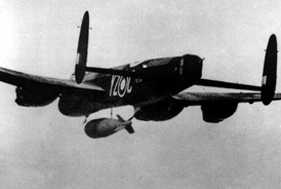 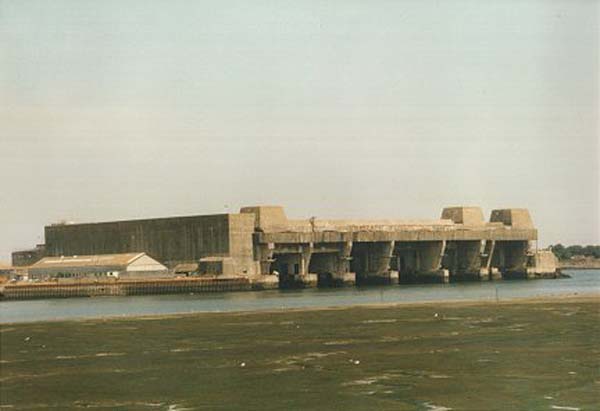
Tallboy Grand Slam Bomb - U Boat Pens Lorient
In August 1944, with the introduction of the massive “tallboy” bombs, developed by Barnes Wallis, the RAF finally had the power to destroy the heavily protected U Boat pens and duly despatched
them with a raid by the Lancaster’s of 617 Squadron (The Dam Busters) and soon after this the advancing Allies put paid to any ideas the Germans had in France. As soon as any U boat had left these bunkers, it was at the mercy of marauding aircraft and in the final year of the war, 57 U boats were destroyed by bombs, compared with only 5 in the
previous 5 years. It just goes to show what might have been achieved if the Coastal Command and Bomber Command had resolved their differences early on. From March 1943 to the end of the war, mainly due to air power, a staggering 590 U boats were destroyed, 290 of these by aircraft alone, 174 by ships alone and the remainder by a combination of the
two.
Doenitz succeeded Hitler at the end. He spent the final days frantically trying to rescue people from
the clutches of the advancing Red Army. On the final day of the war, 49 U boats were at sea. All U boats were ordered to surrender to Allied ports. U boat officers at Kiel disobeyed their Commander and “Fuhrer” and scuttled every remaining U boat in German waters whilst Doenitz was asleep.
The Battle of the Atlantic was the single longest battle in history, lasting as it did from 3rd September 1939 until shortly after the official ending of hostilities with the unconditional
surrender of Germany. One or two U boats sank single ships after the end of the war claiming they had not received the surrender signals! Some U boats, not many, survived the war to become tourist attractions of a rare nature. The U-505 rests in Chicago, USA and the
U-534 was lifted from the sea off Aarhus, Denmark and now resides in the Historic
Warships Museum, Birkenhead, Merseyside, opposite HQ Western Approaches and a statue of Walker looking out over the River Mersey from the Pier Head, Liverpool. Most of those captured were eventually used as target practice and sunk. The U505 was captured and an RAF Liberator sank the U534 on the last day of the war. Her crew managed to escape before
she sank; therefore she was not designated a “war grave”.
Without the brave sailors of the Merchant Navy, civilian all, this story would not be written but so saying, not all merchant sailors were heroes. Many ships failed to
sail due to crew shortages. Martin Middlebrook writes in his book Convoy that" the new phase opened in August (1942) with a convoy battle so fierce that the crews of 3 merchantmen took to their boats even though their ships had not been torpedoed. Two crews did go back but the third refused, a most unusual attitude by the normally steadfast British merchant seamen.
Their ship had to be left and a U Boat finished it off later. An unnecessary loss.

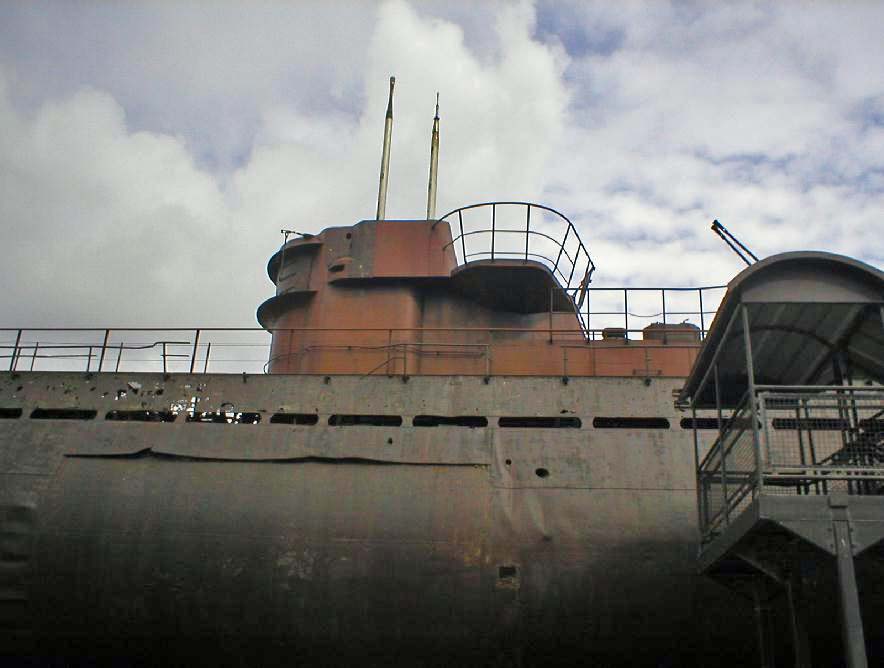
U-505
U-534 |
![]()


